Build an SMS-Based Bot in PHP with Laravel to Track COVID-19 Data
Time to read:
This post is part of Twilio’s archive and may contain outdated information. We’re always building something new, so be sure to check out our latest posts for the most up-to-date insights.
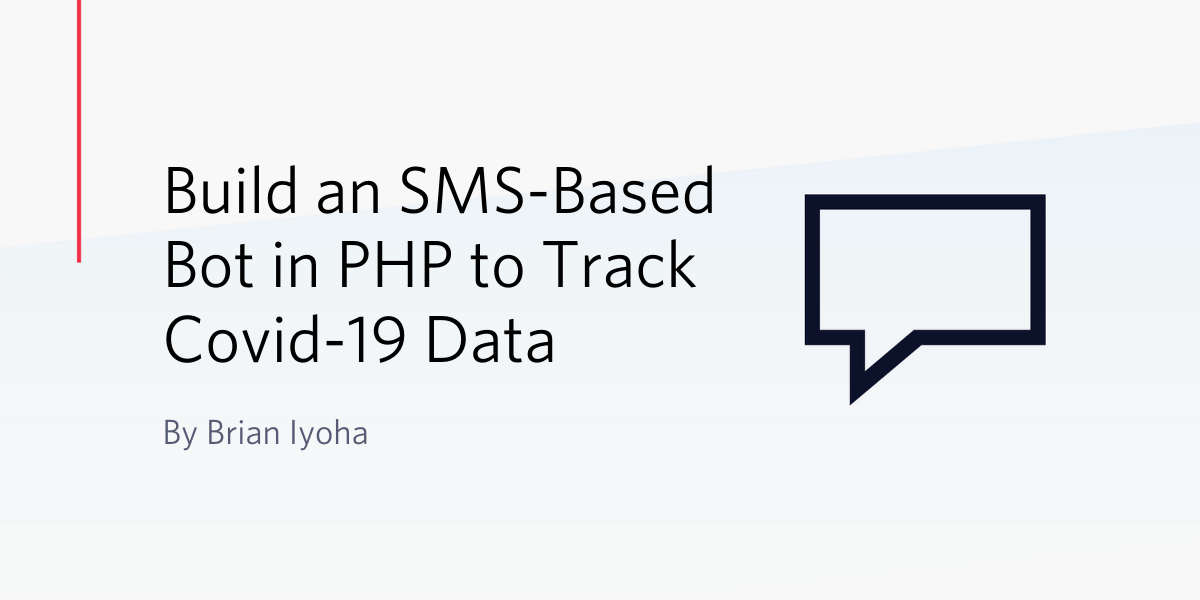
It's no news that the Novel Coronavirus has spread around the world and recently been declared a pandemic by the World Health Organization (W.H.O). Luckily despite “stay-at-home” orders and full lockdowns, information concerning the virus can easily be found on the internet through a simple Google search or on social media platforms.
However, not everyone has easy, in-home access to the internet. In some third world countries like Nigeria, staying indoors to prevent the spread of the virus makes it difficult to get access to information via the internet. Fortunately, text messages are still a good form of communication because they don't rely on one having internet connectivity.
In this tutorial, you will build a simple SMS-based bot to help get information about the Novel Coronavirus cases in a country using Twilio Programmable SMS.
Prerequisites
To follow this tutorial, you will need the following:
- Basic knowledge of Laravel
- Laravel Installed on your local machine
- Composer globally installed
- Twilio Account
Project setup
This tutorial will make use of Laravel to create our application and API endpoints. To get started building your bot, you need to first create a new Laravel project. Open up your terminal and run the following command to generate a new Laravel application using the Laravel installer:
NOTE: The Laravel installer needs to be installed on your computer for the above command to work. If you don't have it installed, head over to the official Laravel documentation to see how to.
Next, point your terminal working directory to the newly created project, and run the following command to install the Twilio PHP SDK which will be used for sending out SMS from the application:
Now you need to get your Twilio credentials which will be used for authorizing requests made using the Twilio PHP SDK. Head over to your Twilio dashboard and copy your Account SID and Auth Token:
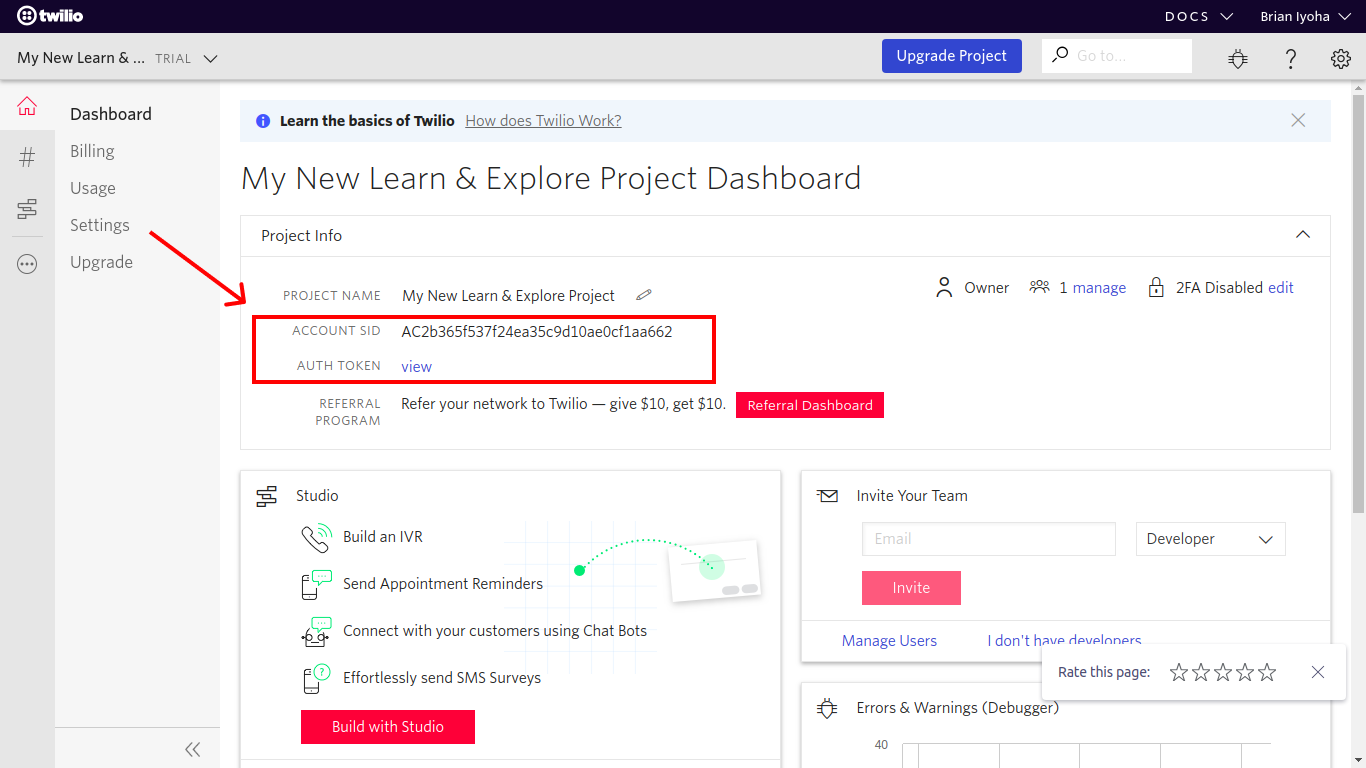
Next, head to the phone numbers section and copy your active Twilio phone number which will be used as the access point for the SMS bot:
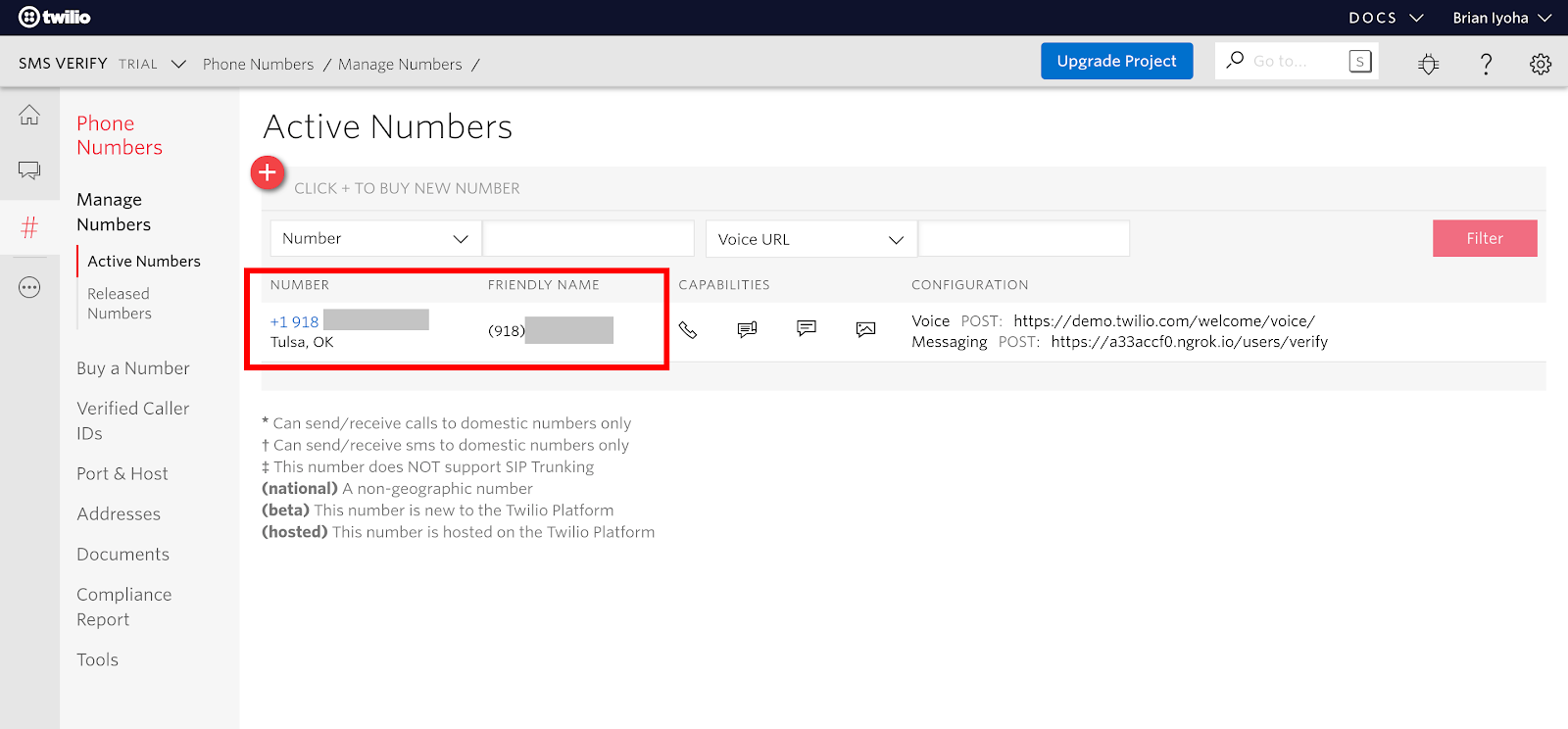
It’s important to keep these credentials safe in your application. To do this open up your .env file in the project root directory and add the following variables to store them as environment variables:
Building the Bot Logic
Now that you have successfully set up your Laravel project, let's jump into writing out the application logic. Start off by creating a Controller that will hold the application business logic. Open up a terminal in the project directory and run the following command to generate a new controller class:
Next, open up the newly created controller class app/Http/Controllers/BotController.php and make the following changes:
Let's break down what’s happening in the code above. The checkCountryStatus() function is the main function here which handles what happens when a new message is sent to your Twilio number. The phone number of the sender is retrieved from the From property of the request body, followed by the Body property which is the name of a country the sender would like to get information about.
Next, using the new HTTP Client from Laravel, a GET request is made to https://github.com/novelcovid/api - an open-source API for tracking COVID-19:
The country name $body is passed to the API URL as a path parameter. Next, using the PHP json_decode method, the response from the API is stored as a JSON object and a message is sent back to the user using the sendMessage() helper function depending on the response gotten from the request. The sendMessage() method takes in two arguments; the message and the recipient. In the sendMessage() function, a new instance of the Twilio Client is instantiated with the credentials retrieved from the environment variables, stored in an earlier section of this tutorial:
Next, using the instance of the Twilio Client, the messages->create() is called to actually send out an SMS to the recipient via the Twilio SMS API. The message->create() method takes in two arguments; recipient, the receiver of the message and an associative array containing the body and from properties:
In this case, the from number is your active Twilio phone number and the body is the response to be sent back to the initial sender of the message.
Creating the Route
Having written out the application logic, you need to create an entry point to your application. To do this, open up the routes/api.php file and make the following changes:
Setting up the Twilio Webhook
Before you can move on to testing the bot, you must first update your Twilio phone number webhook settings with a publicly accessible route to your application that enables Twilio to know what to do whenever a new message is received.
Making the application publicly accessible
To allow access to your Laravel project through a webhook, your application has to be accessible via the internet and this can easily be done using ngrok.
If you don’t have ngrok already set up on your computer, you can quickly do so by following the instructions on their official download page. If you already have it set up, then open up your terminal and run the following commands to start your Laravel application and expose it to the internet:
Take note of the port your application is currently running on (usually 8000). Next, while still running the above command, open another instance of your terminal and run this command:
After successful execution of the above command, you should see a screen like this:
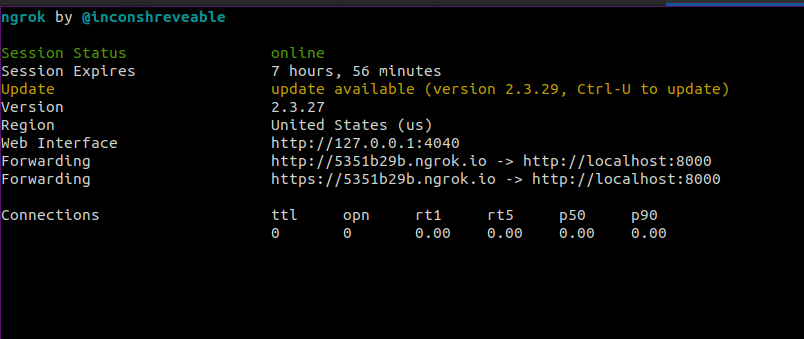
NOTE:
- Replace 8000 with the port your application is running on.
- Take note of the forwarding URL as we will be making use of it next.
Updating the Twilio phone number configuration
Navigate to the active phone number section on your Twilio console and select the active phone number used for your application. Next, scroll down to the Messaging segment and update the webhook URL for the field labeled “A MESSAGE COMES IN” as shown below:
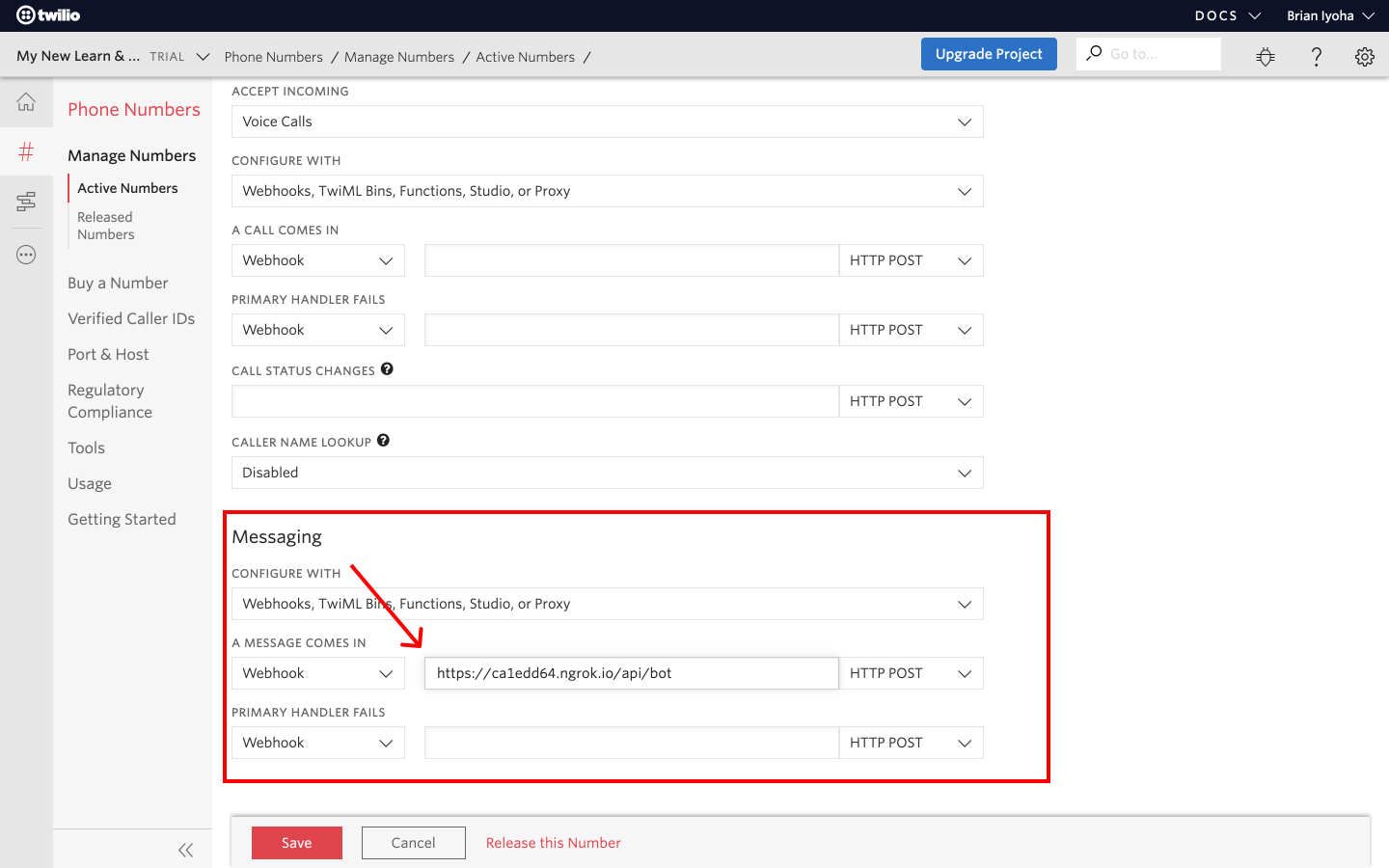
NOTE: The URL path should be prefixed with /api.
Testing the bot
Now that your webhook has been updated, you are now ready to test your application. To do this, simply send a text with a country name to your active Twilio phone number. If successful, you should receive a response shortly after with a summary of the coronavirus cases in the country or an error message if otherwise:
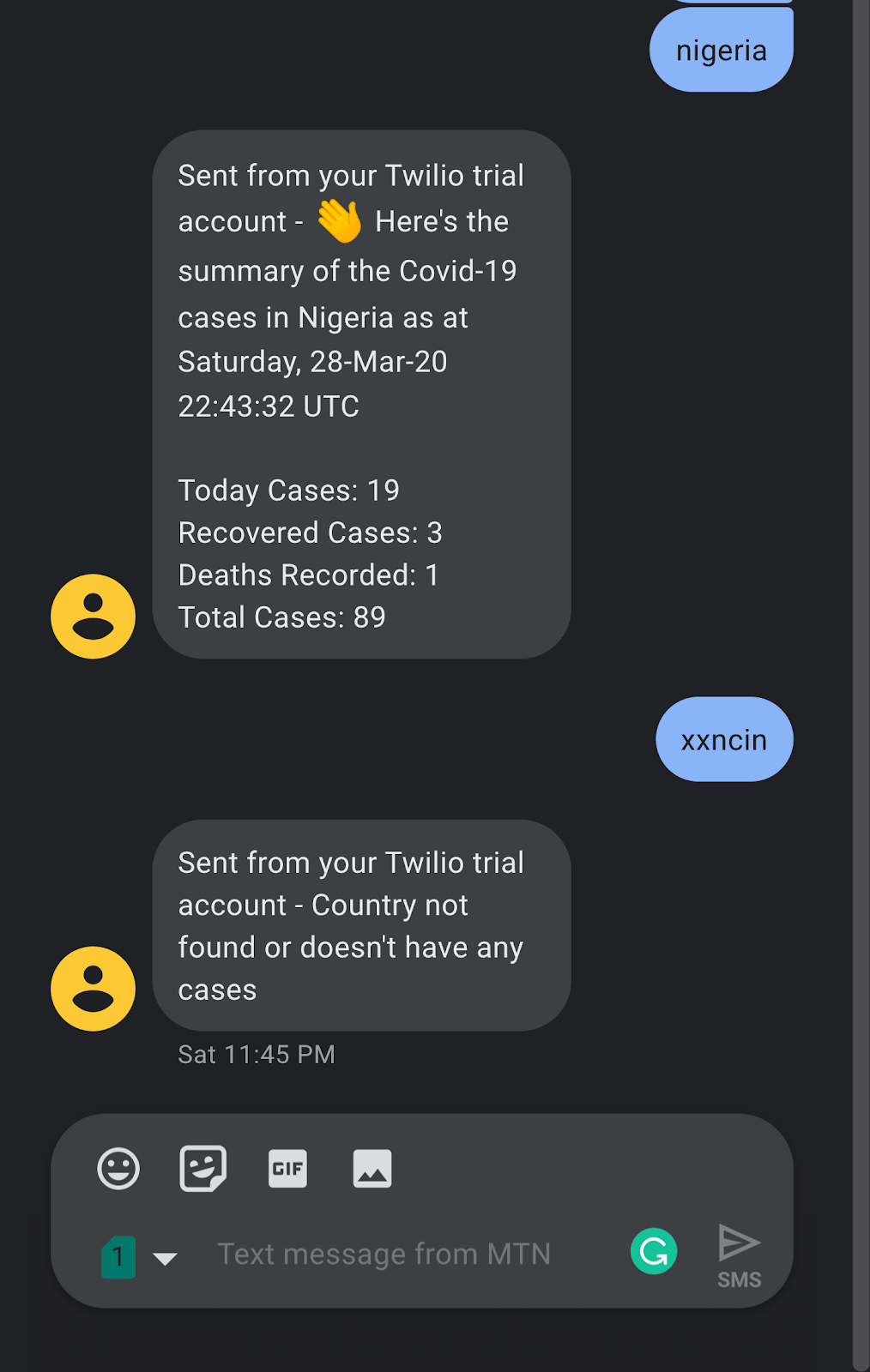
Conclusion
Now that you have finished this tutorial, you have successfully built an SMS based bot. You have also learned how to respond to SMS sent to your Twilio phone number from a Laravel application. If you will like to take a look at the complete source code for this tutorial, you can find it on Github.
Remember to stay safe, stay indoors, and always wash your hands. We will get through this together ❤️.
I’d love to answer any question(s) you might have concerning this tutorial. You can reach me via:
- Email: brian.iyoha@gmail.com
- Twitter: thecodearcher
- GitHub: thecodearcher
Related Posts
Related Resources
Twilio Docs
From APIs to SDKs to sample apps
API reference documentation, SDKs, helper libraries, quickstarts, and tutorials for your language and platform.
Resource Center
The latest ebooks, industry reports, and webinars
Learn from customer engagement experts to improve your own communication.
Ahoy
Twilio's developer community hub
Best practices, code samples, and inspiration to build communications and digital engagement experiences.


